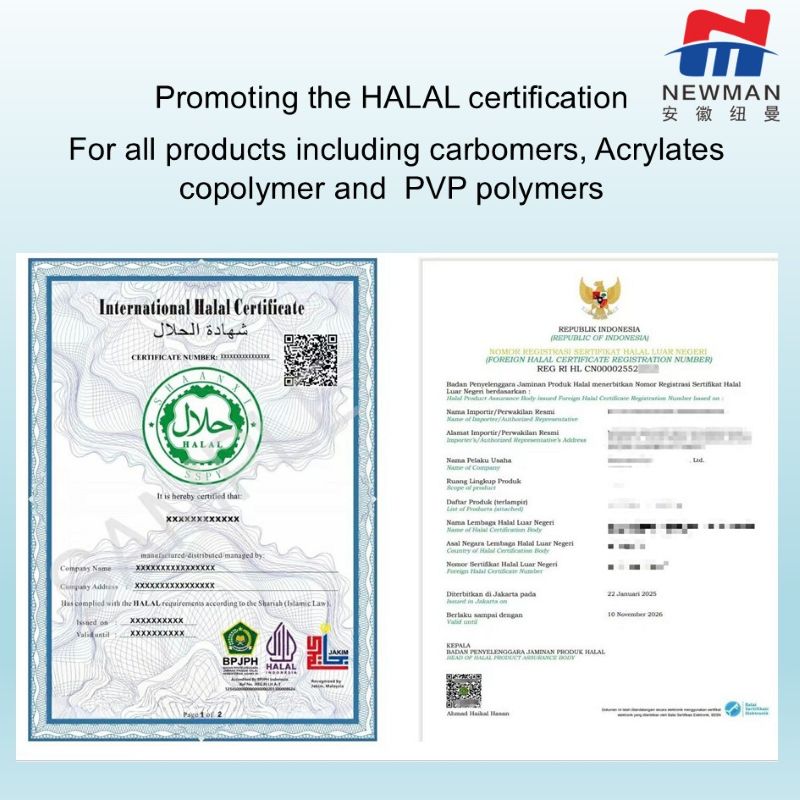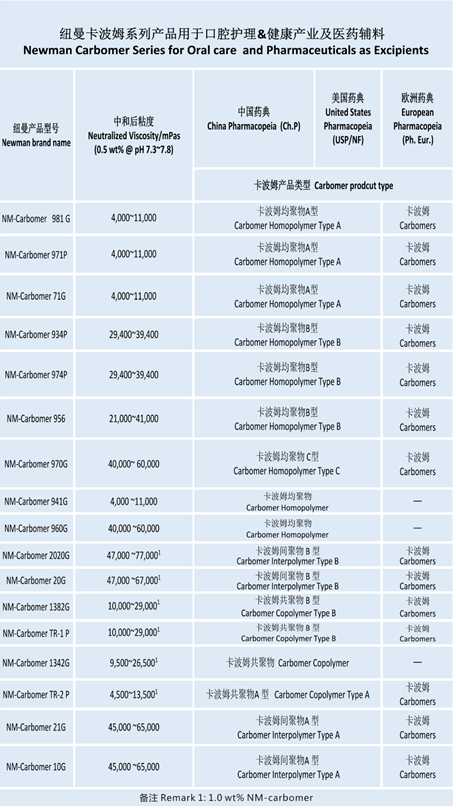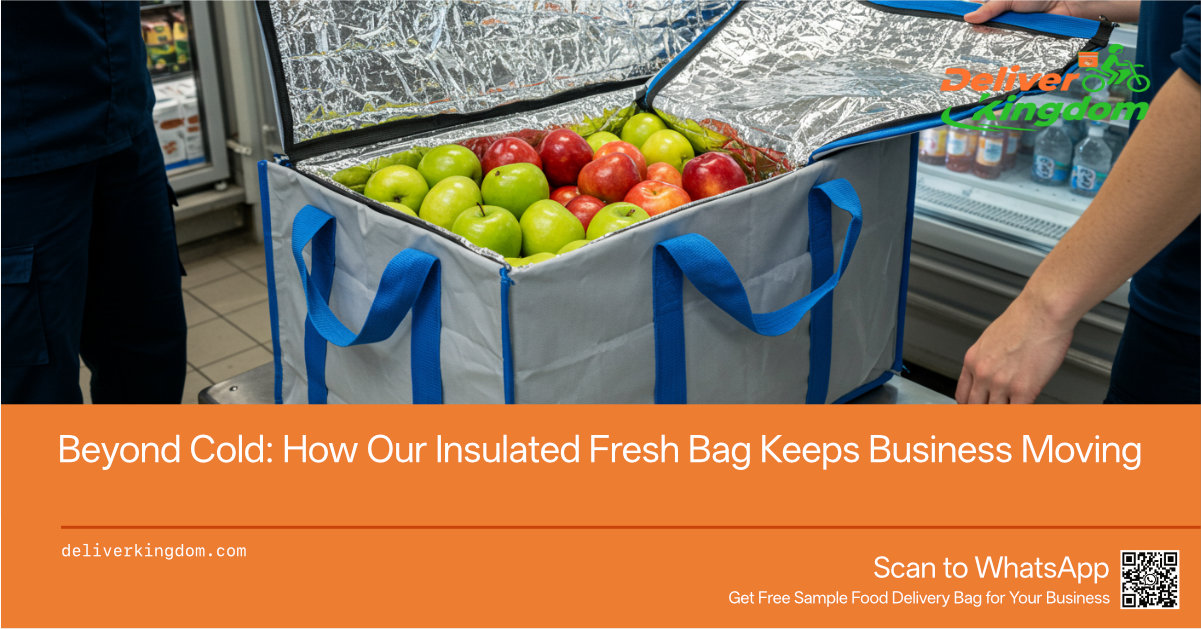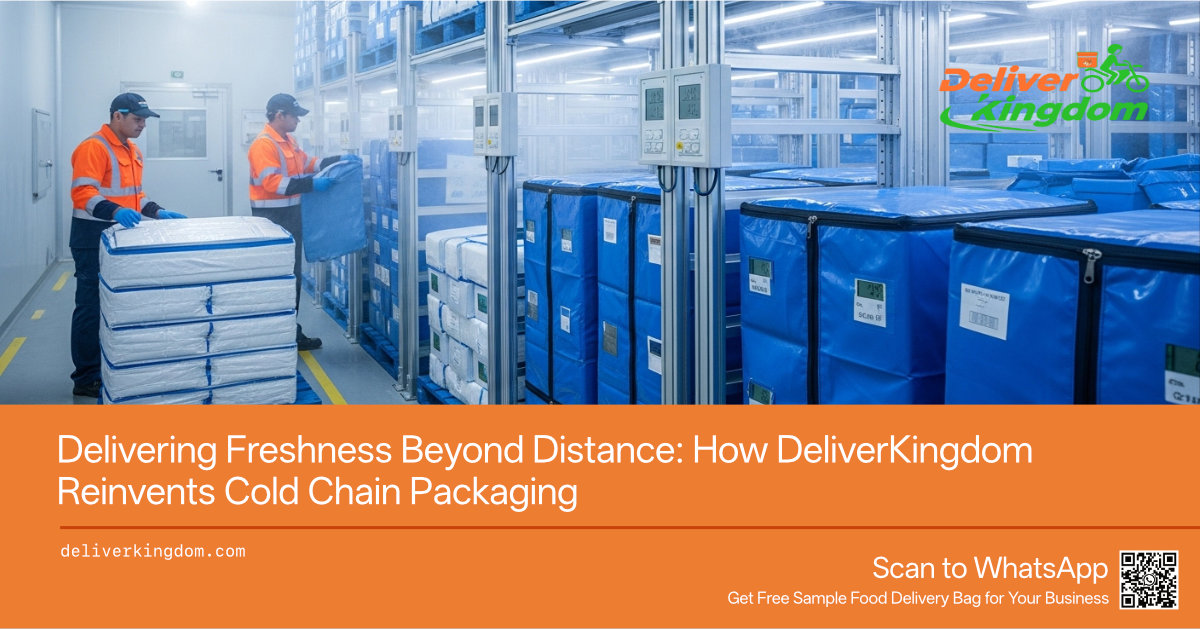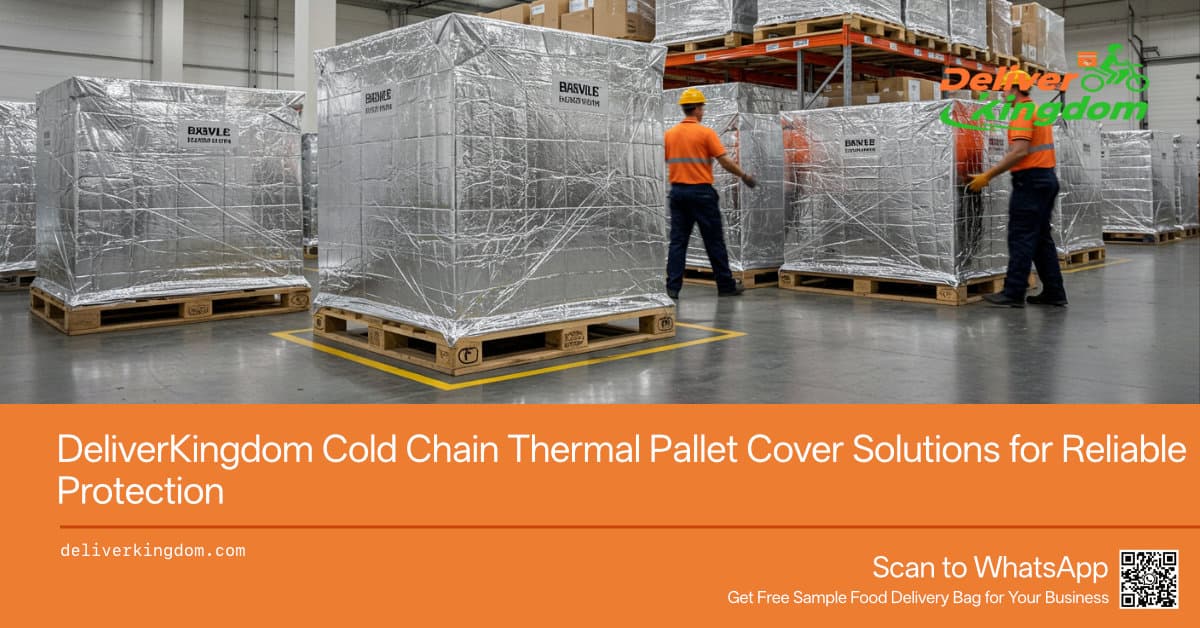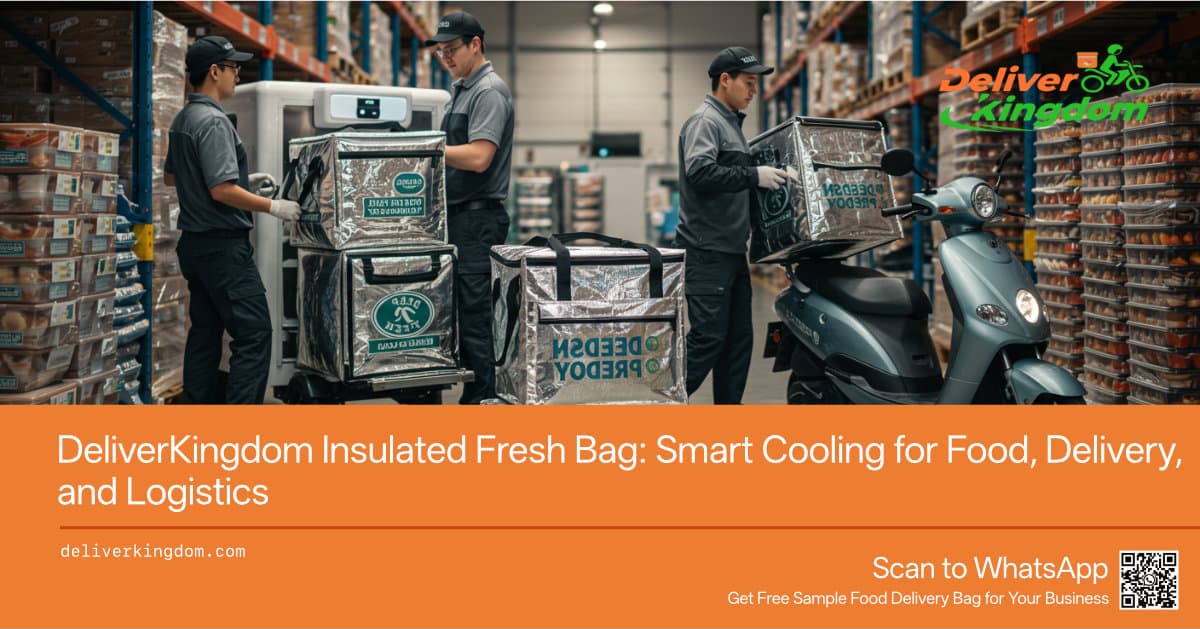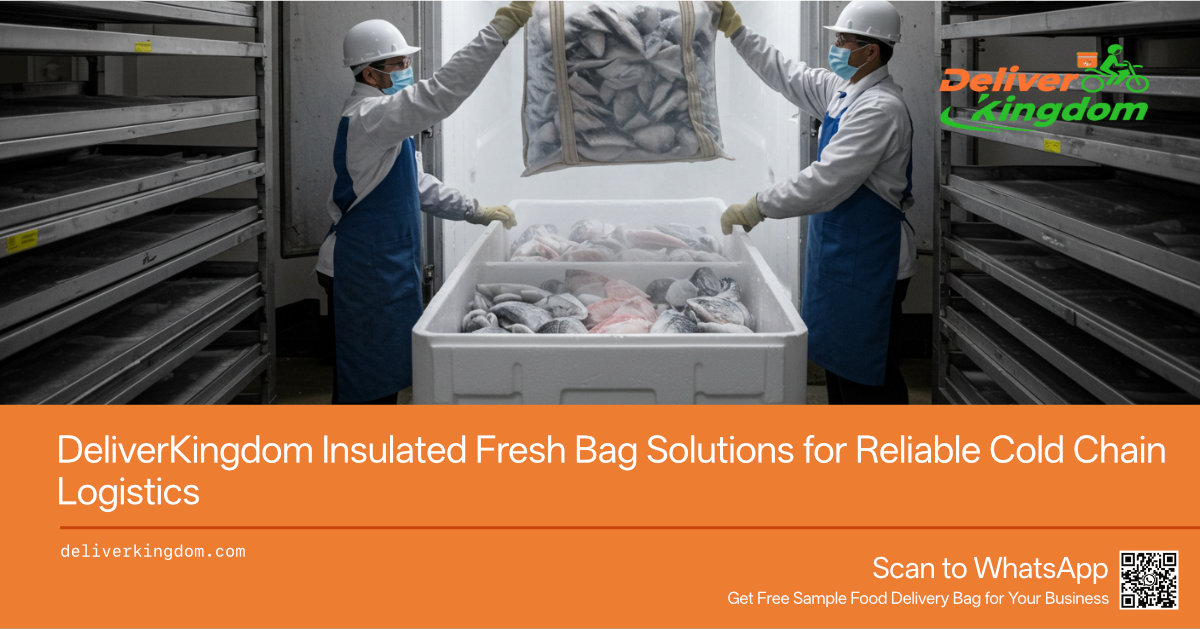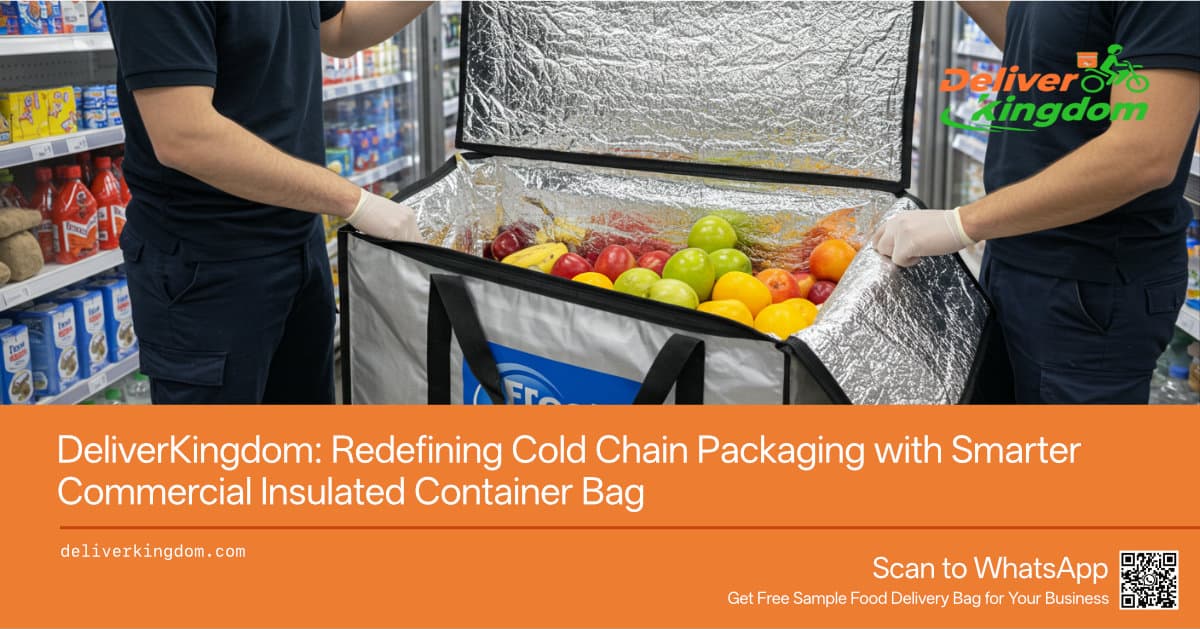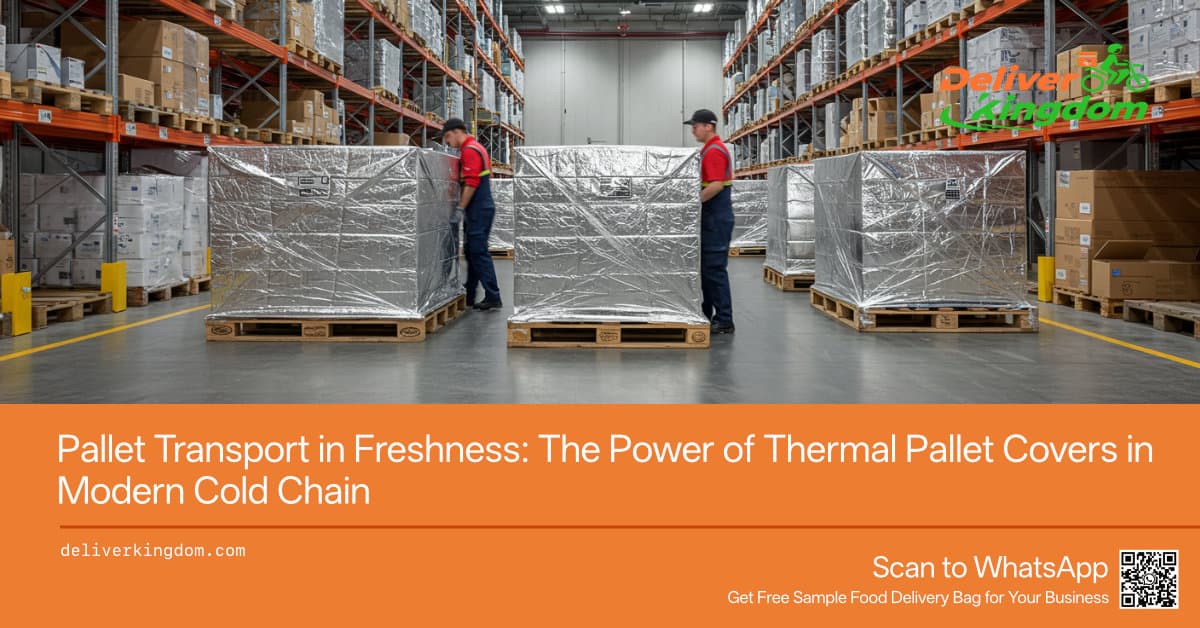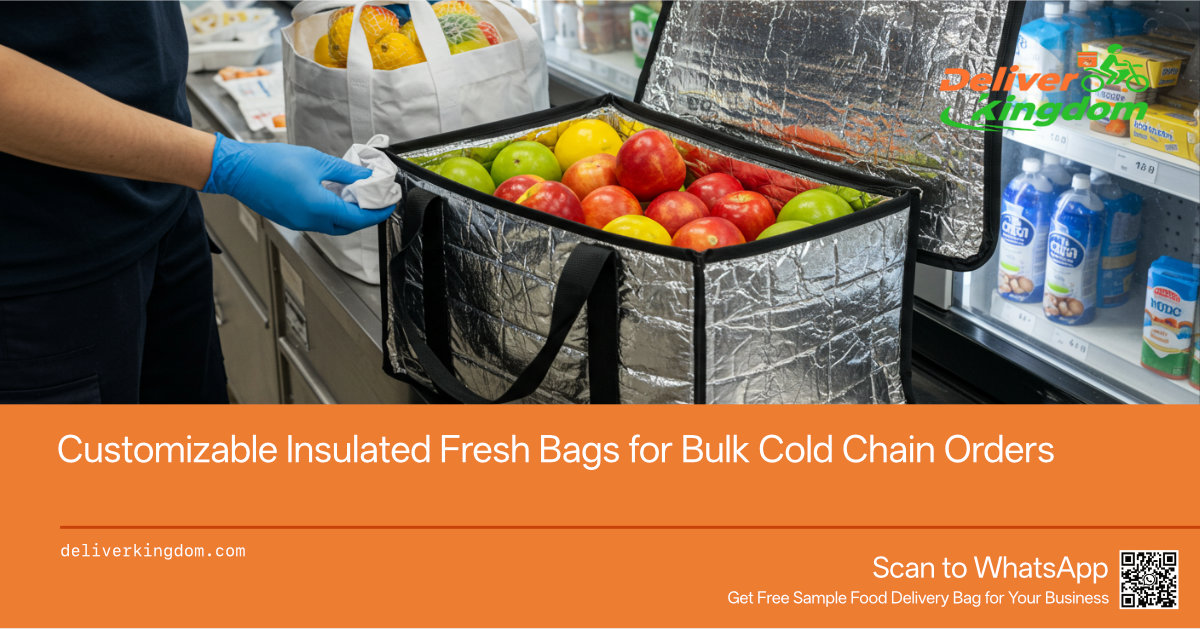
Table of Contents
-
The Challenge of Modern Cold Chain
-
Why Standard Solutions Don’t Work
-
Introducing the Insulated Fresh Bag
-
Multi-Layer Design for Strong Protection
-
Stable Temperature Control for Hours
-
Lightweight, Foldable, Easy Handling
-
Full Customization: Size, Fabric, Color, Logo
-
Fast Turnaround for Large-Scale Orders
-
Trusted by Global Cold Chain Industries
-
The Practical Choice for Your Business
1. The Challenge of Modern Cold Chain
Cold chain delivery today is no longer a simple matter of moving goods from point A to point B. Customers expect fresh produce to arrive as crisp as when it was harvested, ice cream to remain frozen even after hours on the road, and medicines to stay stable regardless of outdoor temperatures. Logistics companies, restaurants, and food distributors are under constant pressure to maintain quality, no matter how long or complex the journey. Add to this the unpredictability of traffic jams, long-distance routes, and climate changes, and you see why businesses are struggling to meet rising demands. Traditional packaging often cannot handle such conditions, and the cost of failure is enormous—spoiled goods, financial loss, and disappointed customers. This challenge is what drives us to deliver solutions that make cold chain more reliable, more practical, and easier to manage at scale.
2. Why Standard Solutions Don’t Work
At first glance, ordinary insulated bags look convenient. They may work for personal use—keeping a picnic cool for a couple of hours or carrying lunch to the office—but they are not designed for the grind of commercial logistics. The materials are often too thin, the insulation wears down quickly, and seams or zippers fail under heavy loads. More importantly, they cannot sustain stable temperatures for long durations, which is critical for frozen seafood, dairy products, or pharmaceutical deliveries. Many businesses learn the hard way, replacing spoiled shipments or dealing with customer complaints. The truth is that the gap between consumer-grade bags and commercial-grade bags is massive. Restaurants, food chains, and logistics providers require solutions that survive constant loading, stacking, and rough handling, while also delivering consistent thermal performance. That is why our customers move away from standard bags and choose high-performance designs like the Insulated fresh bag, which some even describe as a vacuum insulated bag or a deep cold delivery bag because of its durability and reliability.
3. Introducing the Insulated Fresh Bag
Our Insulated fresh bag was created for businesses that can’t afford compromise. Unlike regular bags, this product combines durability with advanced insulation to keep goods safe over long distances. It’s not just about keeping items cold or hot—it’s about maintaining their original quality until they reach the customer. With its multi-layer structure, the bag resists heat transfer, repels water, and blocks dust or odor, making it a trusted partner in daily operations. The design is practical too, using Velcro or zippers that make opening, closing, and cleaning straightforward, while allowing the bag to fold flat when not in use. Many partners in cold chain delivery call it their “deep cold delivery bag” because it performs consistently under pressure. And what makes it truly unique is its flexibility. We provide OEM and ODM services so businesses can choose the size, fabric, and color they need, while also printing their own branding on the bag. This way, the Insulated fresh bag is not only functional but also a reflection of your brand identity in every delivery.
4. Multi-Layer Design for Strong Protection
When it comes to protecting products during transport, design is everything. The Insulated fresh bag uses a carefully engineered multi-layer structure that combines thermal insulation with waterproof and dust-resistant materials. Each layer serves a purpose: to keep the internal temperature stable, to stop external moisture from seeping in, and to make sure no unwanted odors contaminate the goods inside. Unlike thin, single-layer bags that wear out after repeated use, this bag is built to withstand the constant stress of daily operations. The external fabric is tough enough to handle stacking, friction, and rough handling, while the inside remains easy to clean and hygienic. This makes it suitable not only for food and beverages but also for sensitive goods like pharmaceuticals. In practice, this means your frozen meat stays solid, your hot meals stay warm, and your perishable products arrive exactly as they should. For businesses that face heavy workloads every day, this structure is not just a feature—it’s a safeguard against financial loss and customer dissatisfaction.
5. Stable Temperature Control for Hours
One of the biggest pain points in cold chain delivery is the uncertainty of how long products will stay fresh. Traffic jams, long routes, and unexpected delays are everyday problems, and ordinary bags rarely provide protection beyond a short window. The Insulated fresh bag changes this by maintaining stable temperatures for hours at a time, whether you’re dealing with frozen fish, chilled beverages, or piping hot meals. The bag acts as a shield, locking in the temperature so your goods don’t suffer from sudden heat or cold exposure. Businesses transporting ice cream or dairy products often face huge losses if the cold chain breaks, while hot food delivery companies risk customer complaints if meals arrive lukewarm. With this bag, those concerns are reduced dramatically. Many clients describe it as reliable as a deep cold delivery bag, designed to withstand the harshest demands of logistics. By ensuring consistency, the bag doesn’t just protect products—it protects the reputation and trust of your business.
6. Lightweight, Foldable, Easy Handling
Heavy containers may protect goods, but they slow down operations, consume more fuel, and make workers’ jobs harder. The Insulated fresh bag strikes the perfect balance by being strong yet lightweight. Delivery staff can carry it comfortably, load and unload quickly, and move more efficiently. The clever use of Velcro or zipper closures means the bag opens fast and seals securely, while still allowing it to fold down flat for easy storage when not in use. This not only saves space in warehouses or delivery vehicles but also reduces overall operating costs. Lightweight doesn’t mean fragile, though. The bag is engineered to handle daily stress, from repeated folding and stacking to exposure to different weather conditions. Businesses appreciate how practical it is for large-scale operations, where time and efficiency are critical. Instead of bulky, inconvenient boxes, they now rely on a flexible, portable solution that still delivers strong insulation. For companies managing thousands of deliveries a day, this design translates directly into smoother workflows and lower costs.
7. Full Customization: Size, Fabric, Color, Logo
Every business has different needs, and a one-size-fits-all solution rarely works in professional cold chain operations. That’s why we offer full customization on the Insulated fresh bag. Clients can select the size that fits their products, whether it’s small portions of takeaway meals or bulk shipments of frozen goods. The choice of fabric allows for different levels of durability, water resistance, or branding style. Colors can be matched to your corporate identity, and your company logo can be printed clearly to make every delivery a branded experience. This is where OEM and ODM capabilities shine—turning a practical tool into a marketing asset. For example, restaurant chains use customized bags to create a consistent look across hundreds of outlets, while logistics companies use their branded bags to increase visibility during deliveries. By tailoring the bag to your exact requirements, you’re not just getting a product—you’re getting a solution that integrates seamlessly into your business model and strengthens your brand recognition.
8. Fast Turnaround for Large-Scale Orders
Cold chain businesses rarely need just a handful of bags; they need thousands, sometimes tens of thousands, delivered quickly and consistently. This is where our production capacity makes a real difference. With a factory in Yangchun covering more than 12,000 square meters and over 400 experienced employees, we are equipped to handle bulk orders at speed. Our systems are designed for efficiency, ensuring that large-scale production does not compromise on quality. From raw material selection to final inspection, every step follows strict international standards such as BSCI and ISO9001. This gives clients peace of mind that their bulk orders will arrive on time and meet expectations. Many partners choose us because they can’t afford delays or inconsistencies when rolling out large projects, such as launching new restaurant outlets or expanding logistics fleets. By combining scale with speed, we make sure your supply chain keeps moving smoothly, even when demand spikes suddenly.
9. Trusted by Global Cold Chain Industries
Over the past decade, our Insulated fresh bag has been adopted by businesses across multiple industries worldwide. Restaurant chains use it to deliver meals that stay fresh and hot, while cold chain logistics providers rely on it to protect frozen goods during long-distance transport. Food distributors and trading companies choose it because it offers consistent performance that reduces spoilage and loss. Even pharmaceutical companies have tested and trusted the bag for sensitive deliveries. What makes this widespread trust possible is not just the quality of the product but also our ability to adapt it to different market needs. Some customers prefer it as a vacuum insulated bag, others use it as a deep cold delivery bag—the application may differ, but the confidence it brings remains the same. For companies that cannot afford risks in their daily operations, choosing a proven and widely trusted solution is a way to reduce stress and focus on growing their core business.
10. The Practical Choice for Your Business
At the end of the day, what businesses want is not fancy design or complicated promises—they want a solution that works every time. The Insulated fresh bag is practical, reliable, and customizable, making it the clear choice for companies that depend on cold chain efficiency. By combining multi-layer protection, stable thermal performance, lightweight handling, and full customization, it addresses the biggest pain points faced in real-world logistics. On top of that, our ability to produce large volumes quickly ensures that your business will never face shortages or delays. Whether you are a restaurant chain scaling nationwide, a logistics provider handling frozen deliveries, or a distributor managing international shipments, this bag is built to support your growth. After more than ten years in the industry, we know that success in cold chain comes down to trust. And with every Insulated fresh bag leaving our factory, that trust is reinforced—keeping your products safe, your customers satisfied, and your business moving forward.
